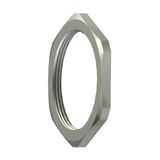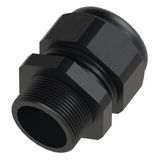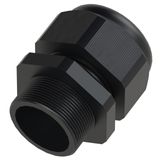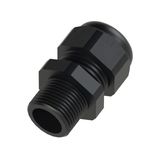PCE Cable inlet









When a panel or enclosure must stay watertight and mechanically safe, cable entry points are the first place things go wrong. With PCE cable inlet systems, installers get standardized glands, sealing entries and strain-relief parts that keep enclosures sealed to IP 66–68, prevent conductor tension, and ensure compliance with electrical and mechanical safety codes. These small fittings decide whether your cabinet passes inspection or ends up rewired after the first service.
What defines a proper PCE cable gland
Choosing the right pce cable glands means specifying: thread size (M16–M50), sealing diameter range, ingress protection, body material and temperature class.
Key specs to check:
- Rated sealing range – typically 3 – 34 mm depending on size; confirm cable sheath diameter before drilling panel holes.
- Material and environment – polyamide glands for indoor use, nickel-plated brass or stainless for outdoor/industrial zones.
- Ingress protection – IP 68 for immersion, IP 66 for general wash-down; seals must remain flexible from −25 °C … +100 °C.
- Tightening torque – follow manufacturer’s table (M25 ≈ 3 – 6 Nm). Over-torque crushes the seal; under-torque leaks.
- Integrated strain relief – clamp must hold the outer sheath firmly so that tension never reaches the terminal.
If you skip these checks, expect water ingress, cracked seals and premature cable failure during vibration or temperature cycling.
Sealing Entries & Strain Reliefs in High-Vibration or Outdoor Panels
When multiple cables pass through one opening or equipment runs under vibration, pce sealing entries and pce strain reliefs become mandatory. They maintain mechanical stability and preserve IP rating under motion and heat.
Typical usage: motor control cabinets, outdoor junction boxes, conveyor or crane panels.
Installation best practices:
Use multi-hole sealing plates when routing several cables through one opening – it keeps consistent compression across all sheaths.
- Install stainless-steel strain clamps where vibration or pull forces exceed 50 N.
- Allow minimum bend radius = 5 × cable diameter; tighter bends damage insulation.
- If the enclosure wall is < 1.5 mm, always add a locknut to prevent thread deformation.
- When done correctly, you keep cable entry integrity for years and avoid insulation fatigue or contact loosening.
Installation, Maintenance & Procurement Checklist
Installation & Maintenance
Clean cable sheath before inserting into gland – dirt reduces sealing adhesion.
- Align cable vertically when tightening; misalignment cuts the gasket.
- Check gland threads for burrs or paint; imperfect surfaces leak.
- Verify clamping range marking on each gland; never reuse a seal once compressed for long periods.
- Inspect seals yearly in outdoor gear – replace any that hardened or cracked from UV exposure.
- Procurement & B2B Supply
Confirm gland thread (M16–M50), sealing range, material and color before purchase. - Order full batch per project – mixing production lots causes tone or torque variation.
- Keep at least 5 % spare glands of each size on-site; replacements during shutdowns save hours.
- Source only from authorized distributors with CE, RoHS and IP certification per model.
- Store components sealed, away from oil and direct sunlight; elastomers deform if compressed during storage.
Why choose Bank of Lamps
Bank of Lamps delivers certified PCE cable glands, sealing entries and strain-relief systems from verified European stock. Each batch includes test reports, lot traceability and matching accessories so installers can build fully compliant IP-rated enclosures without delays. Orders are consolidated in our Latvia warehouse for quick EU dispatch, ensuring consistent color, torque specification and warranty coverage across every shipment.